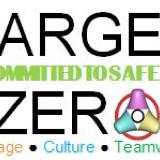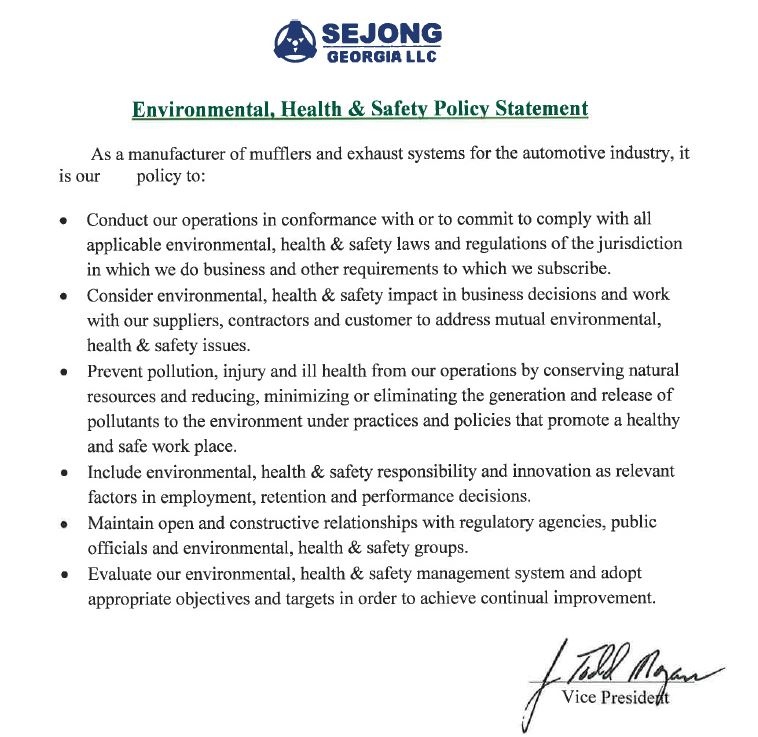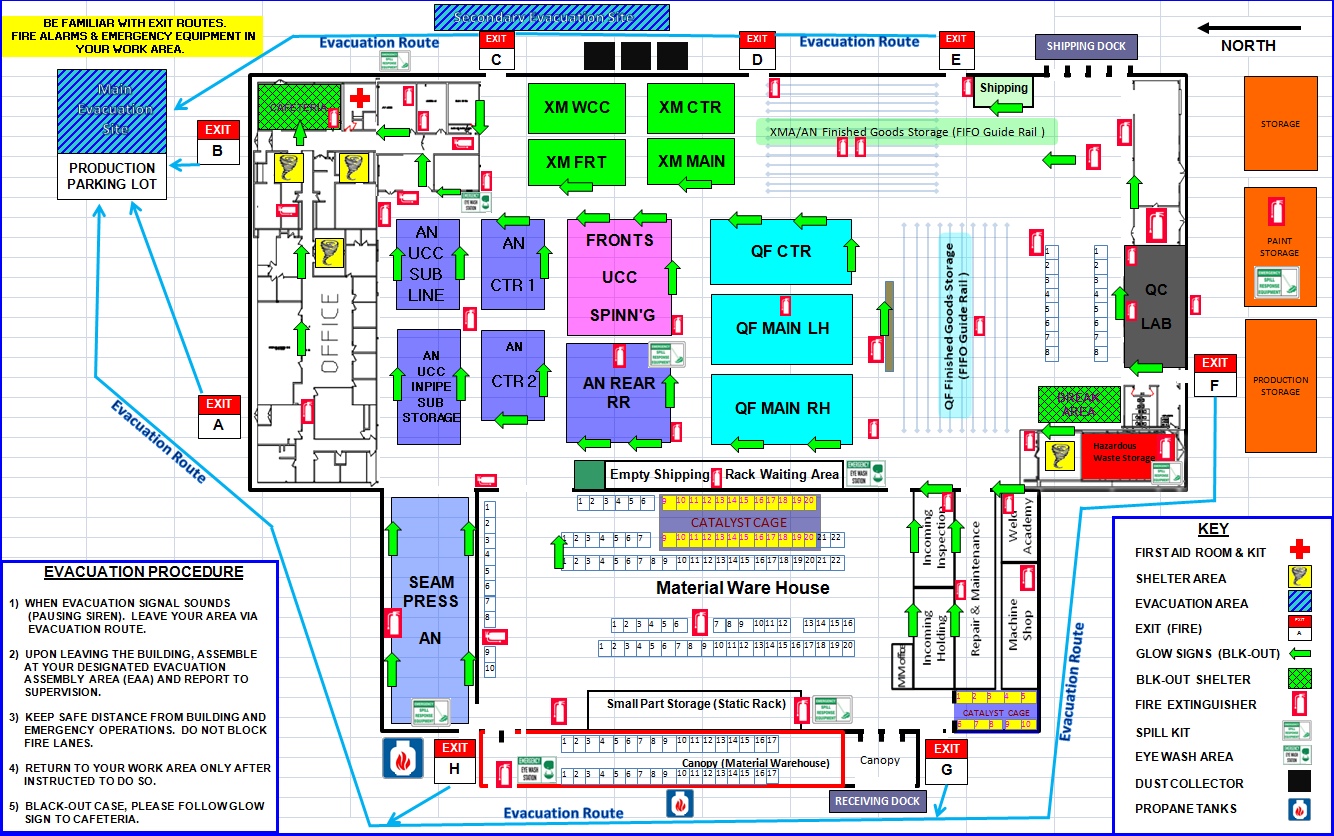Information
-
Company/Contractor
-
Conducted on
-
Prepared by
-
Location
-
Personnel
-
ALL CONTRACTORS AND GUEST WILL WEAR REQUIRED PERSONAL PROTECTIVE EQUIPMENT AT ALL TIMES WHILE IN THE PLANT.
-
1- Each contractor has primary responsibility for the safety and health of contract personnel.
-
2- Each contractor is required to identify a safety representative that has authority to act on safety issues and provide GSJ with point of contact data for this person.
-
- The safety representative is responsible for adhering to all GSJ's safety policies/procedures. All personnel must adhere to applicable OSHA regulations and NFPA requirements.
-
- Inspection of all work areas.
-
- Train their personnel regarding hazards they may encounter.
-
- Providing certificates of insurance.
-
3- Contractors shall provide their employees with all personal protective equipment (PPE) in order to complete assigned job responsibilities, including but not limited to: Hard Hats, Safety Glasses with side shields, Hearing Protection, Respiratory equipment and Fall Protection systems.
-
- Fall Protection is required for all work over 6 feet in elevation. A harness with a shock absorbing lanyard must be worn as part of the fall protection systems.
-
-
4- Contractors must comply with all Federal, State and Local OSHA and EPA regualtions.
-
5- Lock-out/Tag-out procedures must be followed when working on energized equipment.
-
6- All rigging (Straps, Slings, Chains) used by contractors must be inspected by the Engineering/Maintenance Manager to confirm condition and proper use.
-
7- Smoking is allowed only in the DESIGNATED SMOKING AREA.
-
8- The contractor is responsible for removal of all wastes, trash, materials, etc. unless prior agreement with GSJ is made. All contractors are responsible for properly managing their waste. All oils and chemical disposal must comply with Local and Federal regulations.
-
9- Contractors must sign in and out each day.
-
10- Compressed cylinders storage and use must follow all OSHA and Compressed Gas Association requirements.
-
- Information regarding chemicals used or handled at GSJ is maintained by the EH&S Manager & Operations Manager. Contractors and their employees must be familiar with the information if they work in areas where chemicals are used. This shall include pertinent information within Safety Data Sheet but shall not be limited to handling precautions, protective equipment, symptoms of exposure and first aid for each chemical used at GSJ.
-
- No metal ladders shall be used at the work site, only ladders made of wood or fiberglass, or other non-conductive materials are to be use.
-
11- Safety glasses with permanent side shields are required throughout the plan. (Exceptions: Restrooms, Break rooms, Office Areas)
-
12- Shirts shall be worn at all times. The minimal shirt is a T-shirt with 4 inch sleeves. Tank tops and cut off shirts shall not be won. Shirts must be tucked in pants. All personnel pants must be worn at waist and can not be sagging.
-
13- Trousers or pants shall be ankle length. NO SHORTS ALLOWED.
-
14- Loafers, open toed, open heel, and high heel shoes are not permitted in the plant.
-
15- Steel toed shoes are required in all process areas of the plant.
-
16- Good housekeeping conditions shall be maintained at all times. Contractors shall provide trash receptacles for personal trash accumulating in their area of work.
-
17- No cans, bottles or eating is allowed in production areas.
-
18- Be alert to fork truck/pack mule track around you.
-
19- The contractor is responsible for ensuring that all tools and equipment are maintained in safe working order and used only for their intended purpose.
-
20- GSJ will comply with Federal, State and Local laws regarding criminal prosecution.
-
21- Contractors can be held responsible for providing spill clean-up const for labor and materials in case of negligence. The area of the spill must be cleaned up to the extent that is is returned to the original state that existed prior to incident.
-
- Spill kits are located throughout GSJ. Materials from the spill kits should be used for EMERGENCIES ONLY! After use of spill kit materials, restocking should occur immediately. Spill kit specifications can be obtained from GSJ EH&S Manager.
-
22- WASTE WATER DISCHARGE PROCEDURES:<br>Contractor shall NOT dump waste waters or other liquid wastes into the GSJ waste water or storm water systems, trenches, manholes, sumps, sewer connections, etc. without special advance approval to use the GSJ waste water system.
-
23- All contractors must sign a "Hot Work Permit."
-
-
1- The Fire Alarm is loud pausing siren that also contains flashing lights within the plant.
-
2- The Tornado Alarm and Chemical Spill Alarm is loud solid siren sounded by the EH&S Manager/Production Supervisor/Management.
-
IF AN EMERGENCY OCCURS WHILE YOU ARE WORKING IN OUR FACILITY PLEASE EXIT TO THE EVACUATION AREA.
-
Add signature
-
Add signature
-
Add signature
-
Add signature
-
Add signature
-
Add signature
-
Add signature
-
Add signature
-
Add signature
-
Add signature
















